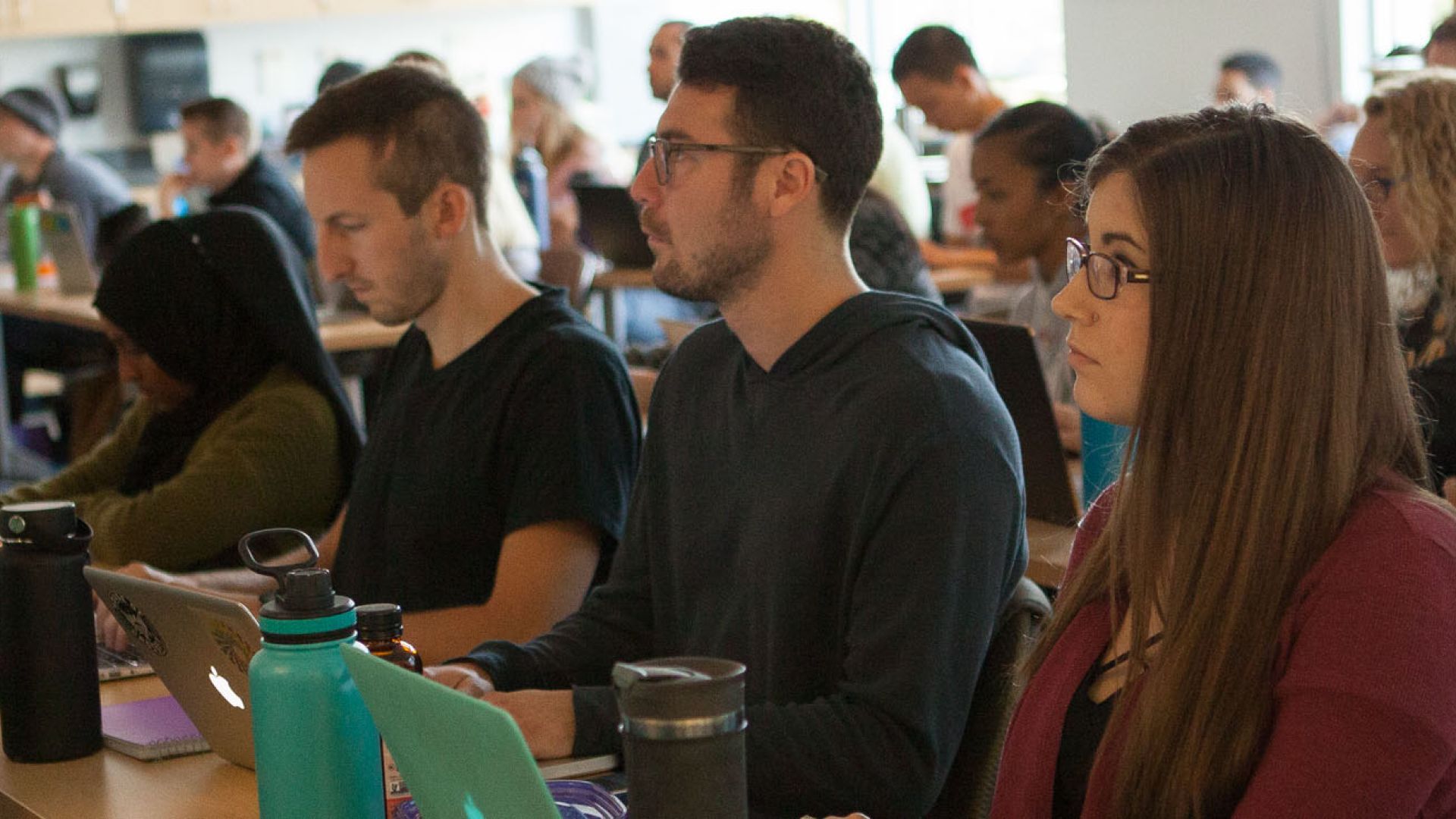Pacific University students who are interested in a career in medicine may choose to complete a pre-med track along with the bachelor's degree in preparation for medical school. Pacific University offers pre-med tracks in allopathic and osteopathic medicine. Pacific also offers several other pre-professional tracks.
Allopathic medicine
Allopathic medicine offers many careers, and new opportunities are constantly emerging with each advance in medical knowledge. Allopathic physicians, who earn doctor of medicine, or MD degrees, cover a wide range of functions in health maintenance, including acute care and preventive care. These responsibilities include diagnosing disease, supervising care of patients, prescribing treatment, and participating in delivery of healthcare. Some physicians also concentrate on basic or applied research; some become teachers; and others combine various elements of these activities.
Graduating students select an area of medicine for further training and eventual practice. Generalists specialize in internal medicine, pediatrics or family medicine, while other specialties include allergy and immunology, anesthesiology, dermatology, emergency medicine, obstetrics and gynecology, pathology, psychiatry, radiology, rehabilitation, and surgery (in various specialties of its own).
Many physicians work long, irregular hours. Employment for physicians and surgeons is expected to grow by 3 percent form 2021 to 2031, and in 2021, the median annual salary for physicians exceeded $208,000. Median salaries for cardiologists ($353,970), anesthesiologists ($331,190), emergency medicine physicians ($310,640) and orthopedic surgeons ($306,220) were the highest.
Osteopathic medicine
Osteopathic medicine, meanwhile, is a form of American medical care that embraces a holistic philosophy. Osteopathic physicians, who earn doctor of osteopathy, or DO degrees, practice traditional forms of medicine, such as prescribing medication and performing surgery, but they also are trained to use osteopathic manipulative treatment to assist in diagnosing and treating patients. Osteopathic physicians focus special attention on the musculoskeletal system. About half of all osteopathic physicians practice in primary care areas, such as family practice, pediatrics, obstetrics/gynecology, and internal medicine.
About 11 percent of all U.S. physicians practice osteopathic medicine, often in small cities and towns or in rural areas.
Program and requirements
Pre-med tracks at Pacific University can prepare students for medical school in either allopathic or osteopathic specialties.
There are 150 medical schools in the United States teaching allopathic medicine. Programs vary widely and may include three to eight years of graduate medical education. The first two years are typically devoted to basic sciences, with the next two years focused on clinical skills. Most schools require students to pass the U.S. medical Licensing Examination (USMLE) to graduate. Following graduation, students enter residency training in their specialty. Family medicine, internal medicine and pediatrics often include three years of residency prior to a certification test. Other areas may require additional years of residency.
There are 40 osteopathic medical schools in the United States. The curriculum at these schools involves four years of academic study, often followed by a one-year internship then a residency program that may last two to six years, depending on specialty.
Prerequisites
Allopathic
- General Chemistry | CHEM 220 and CHEM 230 | with lab
- General Biology | BIOL 200 and BIOL 201 OR BIOL 202 and BIOL 204 | with lab
- Organic Chemistry | CHEM 300 and CHEM 400 | with lab
- Physics | PHY 202/204 or PHY 232/242
- English | 180 (Some schools require two semesters)
- Math | MATH 125 or MATH 207 (Some schools require two semesters. Many schools also require one semester of Calculus | MATH 226)
A number of schools also strongly recommend courses in genetics, biochemistry, computer science, cell biology, molecular biology, microbiology, psychology and sociology. Many schools do not accept AP credit in lieu of required courses.
There is a nearly universal requirement that applicants have some clinical experience, either paid or volunteer, and a history of volunteerism.
Applicants must take the Medical College Admission Test (MCAT). Most medical schools recommend taking the MCAT in the spring of the year of application. Note that the biological sciences portion of the MCAT includes material not covered in Biology 200 and 201.
Osteopathic
- General Chemistry | CHEM 220 and CHEM 230 | with lab
- General Biology | BIOL 200 and BIOL 201 OR BIOL 202 and BIOL 204 | with lab
- Organic Chemistry | CHEM 300 and CHEM 400 | with lab
- Physics | PHY 202/204 or PHY 232/242
- English | ENGW 180
- Psychology | One semester
- Math or Computer Science CS 150 | One semester
Applicants are required to take the MCAT.
It is strongly encouraged that applicants obtain clinical experience.
Many schools require that at least one letter of recommendation be written by a DO.
More information
American Medical Association
American Medical Student Association
Association of American Medical Colleges
American Association of Colleges of Osteopathic Medicine
American Osteopathic Association
Contact Us
Paige Baugher | Assistant Professor of Biology
503-352-3165 | paige.baugher@pacificu.edu



